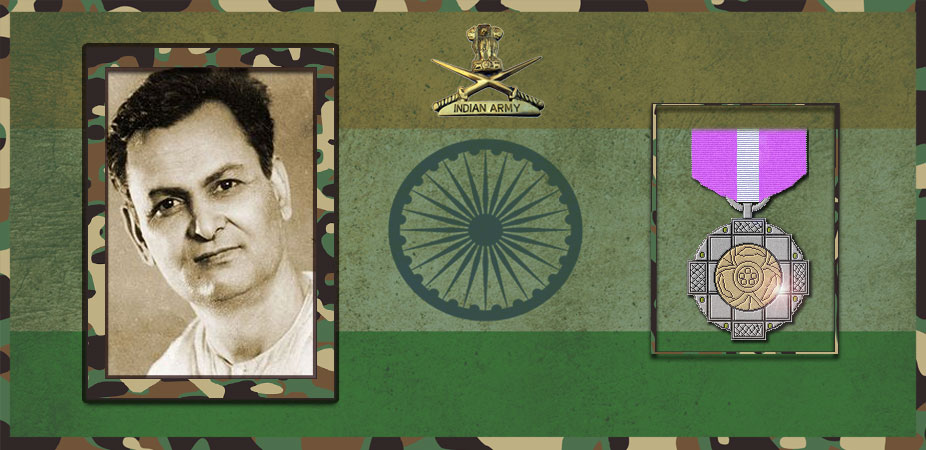Let's salute to our Indian Army together, We are proud to be Indian.
Let's salute to our Indian Army together, We are proud to be Indian.

Rahul Sankrityayan (9 April 1893 – 14 April 1963), is called the Father of Hindi Travelogue Travel literature. He is the one who played a pivotal role to give travelogue a ‘literature form’, was one of the most widely travelled scholars of India, spending forty-five years of his life on travels away from his home.
He travelled to many places and wrote many travelogue approximately in the same ratio. He also famously known for his authentic description about his travels experiences, for instance- in his travelogue “Meri Laddakh Yatra” he presents overall regional, historical and cultural specificity of that region judiciously. He became a Buddhist monk (Bauddha Bhikkhu) and eventually took up Marxist Socialism. Sankrityayan was also an Indian nationalist, having been arrested and jailed for three years for creating anti-British writings and speeches. He is referred to as the ‘Greatest Scholar’ (Mahapandit) for his scholarship. He was both a polymath as well as a polyglot. The Government of India awarded him the civilian honour of the Padma Bhushan in 1963.
He was born as Kedarnath Pandey on 9 April 1893 in Pandaha village, Azamgarh district, in Eastern Uttar Pradesh. He received formal schooling at a local primary school, though he later studied and mastered numerous languages independently, as well as the art of photography.
In his initial days he was a keen follower of Arya Samaj of Swami Dayananda Saraswati. Buddhism came to him and changed his life. He lost faith in God’s existence but still retained faith in reincarnation. Later he moved towards Marxist Socialism and rejected the concepts of reincarnation and afterlife also. The two volumes of Darshan-Digdarshan, the collected history of World’s Philosophy give an indication of his philosophy when we find the second volume much dedicated to Dharmakirti’s Pramana Vartika. This he discovered in Tibetan translation from Tibet.
Sankrityayan’s travels took him to different parts of India including Ladakh, Kinnaur, and Kashmir. He also travelled to several other countries including Nepal, Tibet, Sri Lanka, Iran, China, and the former Soviet Union. He spent several years in the “Parsa Gadh” village in the Saran district in Bihar. The village’s entry gate is named “Rahul Gate”. While travelling, he mostly used surface transport, and he went to certain countries clandestinely he entered Tibet as a Buddhist monk. He made several trips to Tibet and brought valuable paintings and Pali and Sanskrit manuscripts back to India. Most of these formed a part of the libraries of Vikramshila and Nalanda Universities. These objects had been taken to Tibet by fleeing Buddhist monks during the twelfth and subsequent centuries when the invading Muslim armies had destroyed universities in India. Some accounts state that Rahul Sankrityayan employed twenty-two mules to bring these materials from Tibet to India. Patna Museum, Patna, has a special section of these materials in his honour, where a number of these and other items have been displayed.
Although he had little formal education, in view of his knowledge and command over the subject, University of Leningrad appointed him Professor of Indology in 1937–38 and again in 1947–48.
Many of Rahul’s personal collections including the ones he gathered from his multiple trips to Tibet were distributed across to multiple Universities and Museums. Patna Museum has an extensive collection of Buddhist scrolls which he assimilated through his journeys across Tibet. Many of these are rare gems of Indian scriptures translated into Tibetan.
Rahul was married when very young and never came to know anything of his child-wife, Santoshi. Probably he saw her only once in his 40s as per his autobiography : Meri Jivan Yatra. During his stay in Soviet Russia a second time, accepting an invitation for teaching Buddhism at Leningrad University, he came in contact with a Mongolian scholar Lola (Ellena Narvertovna Kozerovskaya). She could speak French, English, and Russian and write Sanskrit. She helped him in working on Tibetan- Sanskrit dictionary. Their attachment ended in marriage and birth of son Igor. Mother and son were not allowed to accompany Rahul to India after completion of his assignment. It was Stalin’s Russia.
Late in life, he married Dr. Kamala, an Indian Nepali lady and had a daughter (Jaya), two sons (Jeta) and (Jayant) . Jeta is now a professor at North Bengal University in the field of Economics, Jaya lives now at Delhi (Noida) and Jayant lives in Pune works as a designer with Tata Motors (Gruaduated from National Institute of Design, Ahmedabad) as per sources.
Rahul accepted a teaching job at a Sri Lankan University, where he fell seriously ill. Diabetes, high blood pressure and a mild stroke struck him. Most tragic happening was the loss of memory. He breathed his last in Darjeeling in 1963.
His last residence at Darjeeling was at 21 Kacheri Road: Rahul Nivas.